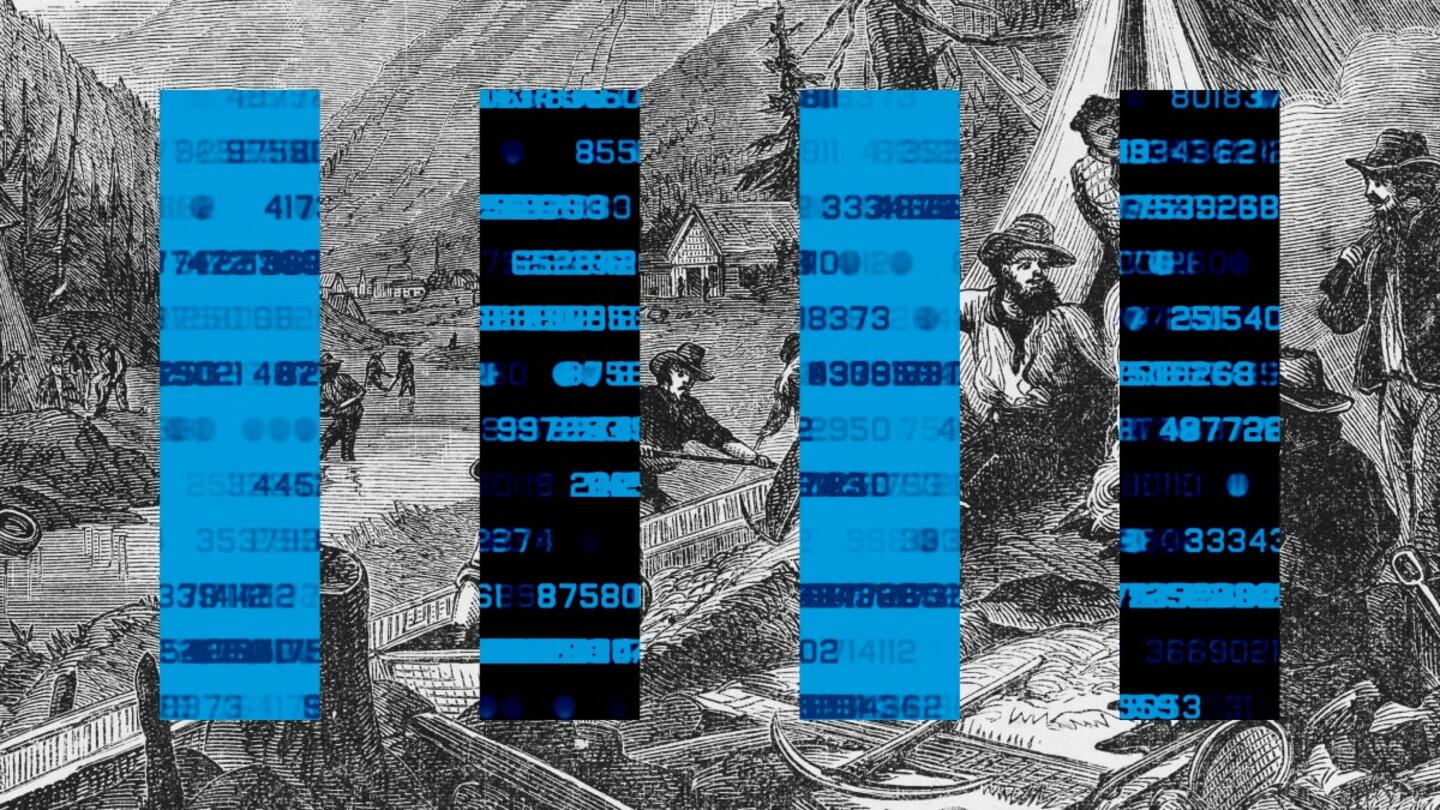As a middle school and high school principal in Memphis, Tennessee, Andy Bobowski hit all the right metrics — his school was one of the highest-performing for growth in the state. So why did students still graduate feeling unprepared?
Society regularly asks youth, “What do you want to be when you grow up?” without providing the right tools to get there. As Bobowski watched students grow from 10 to 18, he noticed a common pattern: Despite scoring in the highest quartiles on tests and in courses, students were still ending up unsatisfied in their careers, including “many who were doing the ‘right’ things — the things that we as a school asked them to do,” he said. “Our education system is so incredibly focused on academic outcomes.”
However, it was clear to Bobowski that the key to success lay outside the standardized method. He explored research showing that a young person’s success is strongly influenced by how connected they are to adults with more career resources.
In July 2021, Bobowski founded Backrs alongside Tom Latkovic, then a senior partner at McKinsey researching young adult professional development. Backrs provides young adults ages 15-25 with professional relationships, coaching, work experience, and resources to help them discover their unique paths to career success and fulfillment.
In doing so, it’s reversing a timeline that many professional development programs get wrong. Rather than evaluating a student based on their current interests as a youth, Backrs starts with the future. Students are asked about the future person they want to become. Then, human mentors, AI success coaches, and professionals who’ve joined Backrs to support young people help them reverse-engineer the steps they need to get there.
This is about more than just a better-paying job. It’s about shaping a generation of capable, confident, and driven young people who contribute to a more fulfilled society and pay those resources forward.
“It’s about understanding the life you want for yourself and prospering as a person,” Bobowski said.
Why career programs should multiply possibilities
Clearly, there’s a gap between what young people learn in a classroom and what actually prepares them for their future careers. More than half of college graduates are in roles that don’t require a college degree. People in the skilled trades also tend to get hired more quickly than college graduates — and often make higher earnings.
“Of the students I was serving, only about 3% of them ended up in a great first job,” Bobowski said. He noted these were “high-performing kids — the kids that are doing a lot of the ‘right stuff,’ taking AP and honors classes.”
Although a traditional academic path can provide valuable knowledge and skills, it stops short of the realistic day-to-day picture of any future career. Backrs uses meaningful connections to fill that gap. The name “Backrs” represents the critical ingredient many young people lack: backing from others.
Most traditional mentorships place mentors on a pedestal and focus more on the mentor’s achievements than the student’s interests and potential.
“You get this idea of a person that has ‘made it’ imbuing the young person with all of their intelligence,” Bobowski said. “At best, they learn a thing or two. At worst, it’s awkward.”
When Backrs pairs students with experienced professionals, the mentors start by focusing on the student’s goals and offering insight and guidance from there. The goal is for any advice to be useful and actionable for the student.
“A lot of tools are asking kids, ‘What do you like as a 17-year-old?’” Bobowski said. “Kids that are 17 only like what they currently know. The idea that we would tell students, ‘These are the four or five jobs that are a good fit for you when you’re 17 because of what you think your interests are and what you think you’re going to want to do for your rest of life’ — we think it’s preposterous.”
By using this framework, many programs inadvertently narrow the possibilities for students by categorizing them and fitting them into boxes before they’ve had a chance to explore their talents fully. Instead, Backrs is showing the importance of helping to expand their horizons through more experiences.
The organization starts by guiding youth as they begin thinking about the type of lives they want to have in their 20s, 30s, and 40s — not only career-wise but in regards to “health, wealth, benefits, and opportunities for advancement,” Bobowski said. “Students do have a clearer sense of what kind of life they want to live. And then, from there, what facts need to be true if you want to live that life? So when we think about exposing students and encouraging self-reflection, what we’re actually trying to do is to broaden the aperture for students, not narrow it.”
Sign up for Stand Together's Rethinking Work & Learning newsletter to get the latest stories, ideas, and trends on the future of employment.
Students then work with their mentors to “reverse-engineer” their lives to meet these goals. This can look dramatically different for each student. It might include apprenticeships, scholarships, funding for supplies, professional connections, or any other professional development. It may or may not include college. Backrs is agnostic about whether or not a student chooses to pursue a degree.
It always involves equipping young people with a clear, honest understanding of how their career choices will shape their daily lives. It’s easy to understand the degrees and certifications required to become a teacher or a doctor, but understanding what that actually means for future finances, schedule, lifestyle, and general day-to-day happiness is something quite different.
“We are being honest with them about how to think about your future,” Bobowski said. “The differences and return on investment of college, of different majors, all these things, that conceptual flip has been really important.”
To be fair, this flip alone is not always enough to guarantee success. Many students will find that their interests change over time or that a chosen career path won’t be as fulfilling as they anticipated. However, by encouraging students to think about these questions, Backrs is establishing an important connection between a career and overall quality of life.
For instance, one student used traditional career aptitude tools and was told that his ideal career would be a park ranger based on his interests in nature, animals, and sustainability. But this left out a lot of important context.
“When we had a separate conversation with him about what he wanted to be true about his life, we learned that he wanted to travel a lot,” Bobowski said. “We learned that he wanted to live in a suburban area. We learned that he wanted a bigger family. We learned that he wanted to generate a lot of wealth. That is categorically different from being a park ranger making $42,500.”
This doesn’t just benefit students; it also helps their future employers. Many Backrs students collaborate with potential employers, gaining hands-on experience through apprenticeships and setting goals for specific skills and qualifications.
Rather than hunting for talent that hopefully matches their needs, employers can grow the talent themselves, fostering long-term relationships with dedicated and driven youth who are specifically coached to fill the organization’s gaps.
Programs that start with the student’s aptitudes and goals and build from there can offer a realistic understanding of what many different career paths might look like. “We are trying to help students think bigger,” Bobowski said. “And then inform the decisions they make as 19-year-olds to give them more options as they get older, not less.”
The importance of sticking with it for the long road
Reverse-engineering life can be transformative for students who might otherwise feel directionless.
I’Yanna was a high school junior who knew she wanted to become a mortician. Backrs helped her identify the steps she needed to take. “Where did I want to intern? Where did I want to go to college? What classes did I want to take?” she said. “The outcome is that I’ve become more confident that being a mortician is something I want to do.”
Kaothara is a junior computer science major at Amherst College. Backrs helped her find financial support, a tech-related internship, and networking opportunities to help her determine which area she loved best. “I feel genuinely supported,” she said.
Backrs tracks many metrics, including strong and weak professional ties, GPAs, graduation rates, scholarships earned, and internships. According to Bobowski, students gain an average of over 330 new professional connections through Backrs, resulting in 25 scholarships, internships, and jobs secured last year alone.
“To be clear, when we talk about a great first job, we also mean a young person being able to live a life that is exciting, fulfilling, and meaningful for them,” Bobowski said.
Those are broad concepts — but the tools and resources young people need to get there are anything but.
“It’s exposure,” Bobowski said. “It’s seeing different ways of operating. It’s learning new skills from people that swim in different water than you. The central thesis for what we were trying to do is make it easier to back and be backed.”
The Stand Together community partners with changemakers who are tackling the root causes of America’s biggest problems.
Learn more about Stand Together’s efforts to transform the future of work and explore ways you can partner with us.

Why AI may help more people achieve the American Dream.

Data centers are at the forefront of the ‘new economy.’ But what exactly are they?

Here’s how to bridge the disconnect between employers and employees.

Lessons learned from Colorado.
